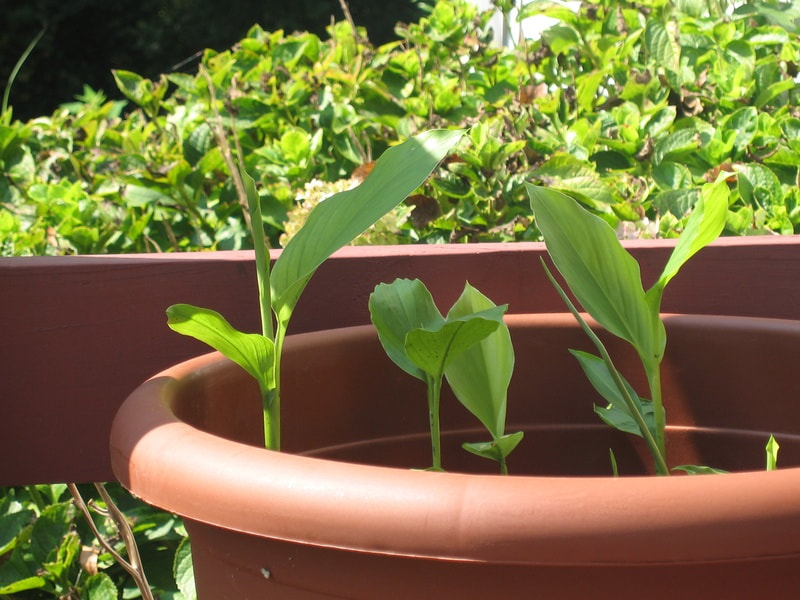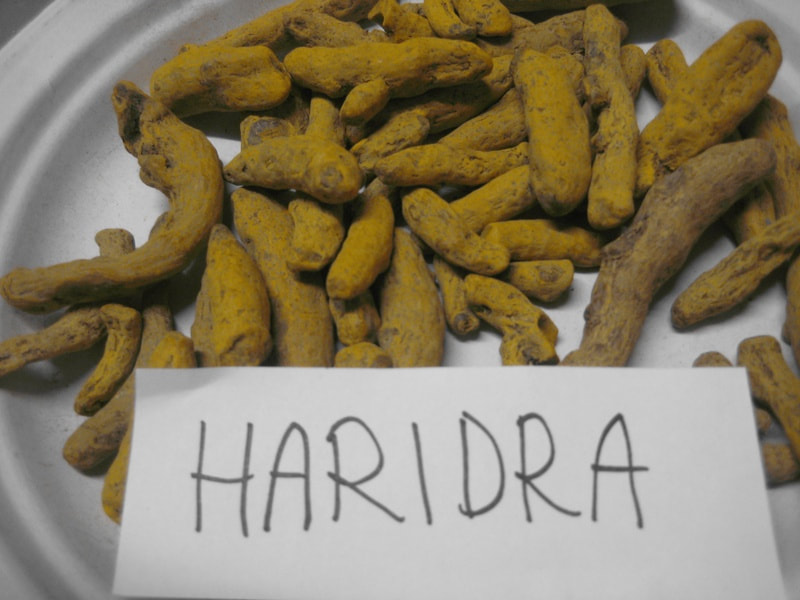Haridra is one of the most popular Ayurvedic herbs. It is used throughout the world in culinary preparations. It gives many curries and even prepared mustard its distinctive yellow color. It may be used as a substitute for saffron in the 12 herb elixir. Haridra means yellow. Haridra is also called haldi (meaning yellow) and gauri (which is a name for Parvati the Shakti of Lord Shiva). Turmeric is considered a sacred herb, and is used in all puja rituals. Unbroken rice is colored with haridra powder and offered to the Lord. Coconuts used to top water pots are painted with haridra. Turmeric is said to have purifying and protective qualities which shield from negative energies. It is considered very useful in pujas which are designed to open channels to the inner planes to invoke devonic assistance, because it helps prevent lower astral entities from negatively influencing the offerings or people making them. Haridra is traditionally used to make the bright red powder (kumkuma) which is offered in pujas to the Lord and worn on the third eye point. When the dry powder of haridra is mixed with slaked limestone, it develops a deep, dark red color. As a culinary and medicinal herb haridra increases digestion and absorption without overly increasing pitta dosha. It is good to season foods with a little haridra. It is good for clearing the liver and purifying the blood. It is slightly warm with a sweet, pungent, and bitter taste. It can help to lower high blood sugar and to reduce cholesterol. It can help treat fever, anemia, inflammation, itching, pain, tumors, arthritis. It is one of the best herbs for the skin. It improves the luster of the skin, but does tend to stain the skin (or anything it touches). It has been traditionally worn by Indian women on their feet and body to enhance beautify. The living woman Saint, Karuna Mayi is often seen wearing turmeric on her face, which is a traditional practice for Indian women. Turmeric can be useful to treat injuries and cuts. It helps to stop bleeding and reduce infection (like iodine). For cuts and bruises it may be used in combination with sandalwood or ushira. Haridra is in the ginger family and it is the ginger like rhizome which is most often used for medicine (though there are uses for the aromatic leaves also).

